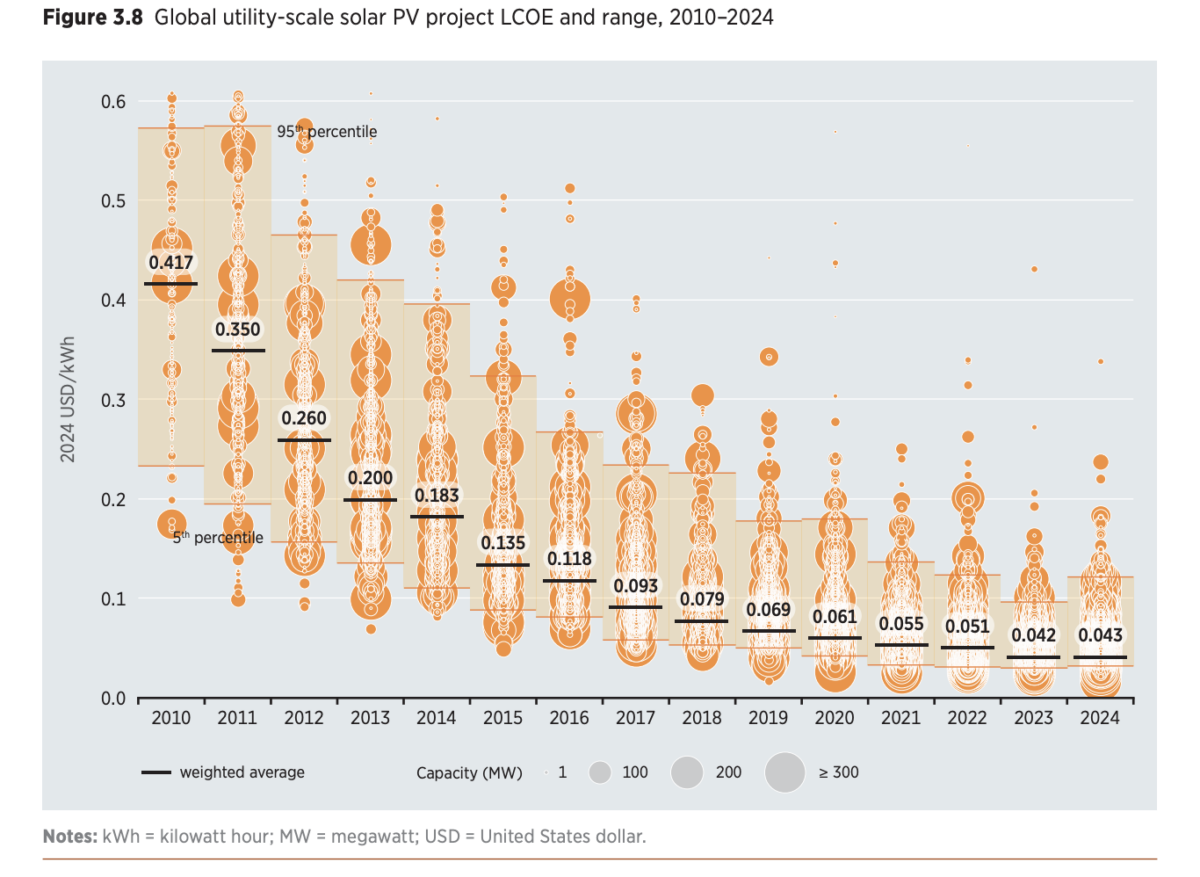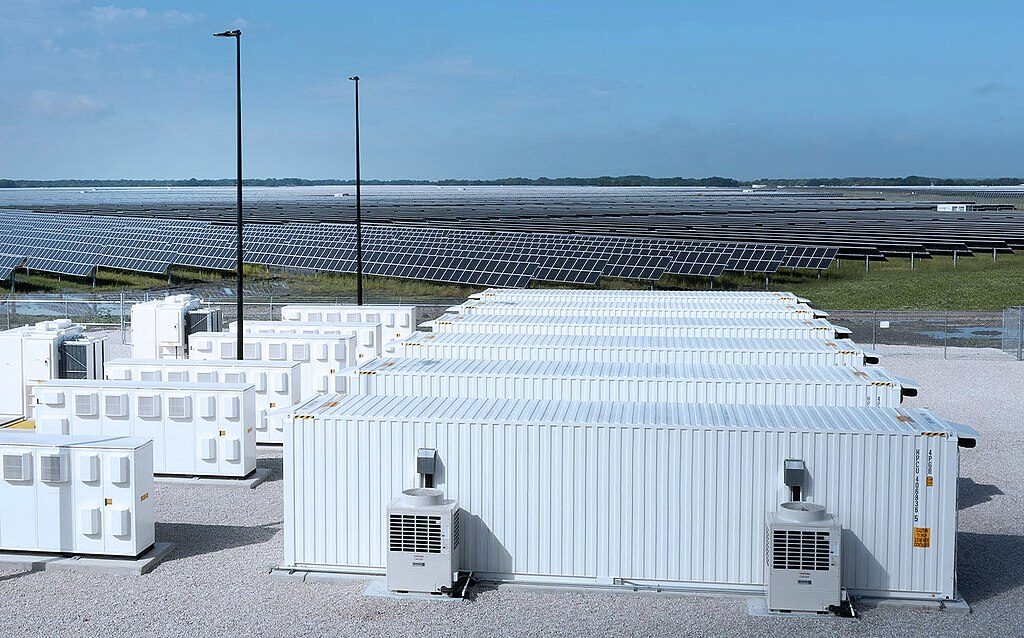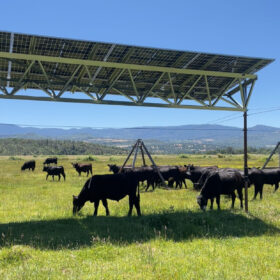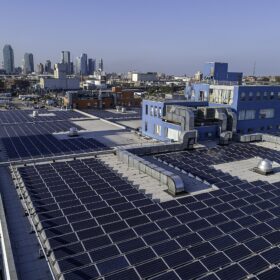The globalized weighted average levelized cost of electricity (LCOE) of utility-scale solar plants stood at $0.043/kWh in 2024, according to the latest report from the International Renewable Energy Agency (IRENA).
The result is a 0.6% increase year-on-year, compared to a 12% decrease in the global weighted solar LCOE between 2022 and 2023. It means solar photovoltaics continue to be the second most affordable source of new power generation globally, behind only onshore wind, which had an LCOE of $0.034/kWh in 2024.
Utility-scale solar projects commissioned in China and India saw the lowest solar LCOEs last year, at $0.33/kWh and $0.38/kWh. In the USA, the solar LCOE stood at $0.070/kWh in 2024.
There was a more notable change in the global weighted average total installed cost (TIC) of utility-scale solar projects in 2024, standing at $691/kW for an 11% decrease year-on-year and an 87% decrease from 2010.
IRENA says that module and inverter cost reductions have been a major driver in the decrease of utility-scale solar TICs, accounting for 60% of the decline between 2010 and 2024. Installation costs, including development and engineering, procurement and construction costs, contributed to a further 30% of the TIC reduction since 2010.

The lowest weighted average TIC for commissioned solar projects in 2024 was in India, at $525/kW, for a 28% year-on-year decrease, followed by China, where average solar TICs reached $591/kW. In the USA, the average TIC for commissioned solar projects reached $1,058/kW for a 7% decrease year-on-year.
The average solar TIC across Europe was $779/MWh in 2024, compared to $1,093/MWh in Africa and $1,133/MWh in Asian countries excluding China and India. IRENA says regional differences are driven by disparities in the maturity of local supply chains, permitting requirements and labour costs.
IRENA’s latest report also reveals that solar photovoltaics were, on average, 41% cheaper than the lowest-cost fossil fuel alternatives last year. On an LCOE basis, 91% of all newly-commissioned, utility-scale renewable capacity delivered power at a lower cost than the cheapest new fossil fuel-based alternative in 2024, with renewables helping avoid $467 billion in fossil fuel costs last year.
While cost reductions in renewables are expected to continue, IRENA’s report also warns that short-term challenges, including geopolitical shifts, trade tariffs, raw material bottlenecks and evolving manufacturing dynamics, could temporarily raise costs.
It adds that higher costs are likely to persist in Europe and North America, due to permitting delays, limited grid capacity and higher balance-of-system expenses. In contrast, Asia, Africa and South America are expected to see more pronounced cost declines, thanks to stronger learning rates and high renewable potential.
“To safeguard the gains of the energy transition, we must reinforce international cooperation, secure open and resilient supply chains, and create stable policy and investment frameworks – especially in the Global South,” commented IRENA Director-General Francesco La Camera. “The transition to renewables is irreversible, but its pace and fairness depend on the choices we make today.”
This content is protected by copyright and may not be reused. If you want to cooperate with us and would like to reuse some of our content, please contact: editors@pv-magazine.com.








By submitting this form you agree to pv magazine using your data for the purposes of publishing your comment.
Your personal data will only be disclosed or otherwise transmitted to third parties for the purposes of spam filtering or if this is necessary for technical maintenance of the website. Any other transfer to third parties will not take place unless this is justified on the basis of applicable data protection regulations or if pv magazine is legally obliged to do so.
You may revoke this consent at any time with effect for the future, in which case your personal data will be deleted immediately. Otherwise, your data will be deleted if pv magazine has processed your request or the purpose of data storage is fulfilled.
Further information on data privacy can be found in our Data Protection Policy.